
It’s a well known fact that the Princetown area was/is famous for its quarries which included Merrivale, Foggintor, Swell Tor and Ingra to name but a few. However, there is also another one which gets very little mention and that is – HERNE HOLE – the very name could well conjure up visions of demonic pit of despair and torment but why should that be? Many would associate Herne with various ancient deities and Shakespeare described him Herne the Hunter and clearly the word ‘hole’ can have dark connotations. In a sense this would be most fitting for Herne Hole Quarry is also know as the Dartmoor Prison Quarry and over time it certainly has been the scene of death, drama and daring convict escapes, some successful and others not quite going to plan. Today the old quarry is out of bounds to the public as it still is the property of the HM Prison estate so to get a ‘lawful’ view of the quarry one must trundle up to Herne Hole Tor (OS grid ref. SX 5785 7451). It would be quite easy to write an entire book about Herne Hole Quarry and its various and numerous events. Hence what follows is a brief overview to give a taste of what happens when you mix a quarry with desperate men, gunpowder, sharp implements and the inquisitive public.
On the 20th of March 1806 Sir Thomas Tyrwitt laid the first foundation stone of a War Depot and what is now HMP Dartmoor. The need for such an establishment was to ‘re-house’ the numerous number of French Prisoner’s of War who were languishing in the hulk ships at Plymouth. So, as can be seen below a notice of tender was issued in 1805 for contractors to undertake the work. In order to build such a place there would naturally be a need for building stone and initially this came from natural materials found scattered around the proposed site. Once this source had been exhausted additional stone came from Herne Hole Quarry which incidentally at the time Thomas Tyrwitt owned. And so began the saga of Herne Hole Quarry.
January 1852 – It was reported that 700 lbs of gunpowder were found stashed away near the quarry and which it was thought was intended for some prison escape plan. On hearing reports of the discovery forty six soldiers and their officers belonging to the 19th Regiment were immediately dispatched to the prison to ensure nothing untoward happened.
May 1865 – A gang of convicts working in the quarry had loaded a hole with blasting powder when it transpired the fuse did not detonate the charge. After waiting a good deal of time for the explosion two men went to inspect the rock when the charge suddenly exploded. Both received serious injuries from which one was not expected to recover.
June 1880 – Having quarried the stone from the quarry it was then transported back to the prison by means of a hand-cart pulled by two prisoners, (see postcard below). On the 12th of June such a cart-load was being transported down the hill by the farm when the cart’s brakes failed. The two men in the shaft were unable to control its descent and stumbled to the ground which resulted in a wheel running over one of the men’s legs. Additionally a large block of stone fell off the cart and hit the second man thus knocking him into a nearby hedge. Both men were reported to be progressing favourably from their injuries.
1881 – Whilst working at the quarry two prisoners called Owen and O’Brien attempted to escape, this was in the days before ‘Human Rights’ and so in order to foil their attempt they were shot. O’Brien, who was serving 25 years penal servitude for setting fire to an old lady was shot dead and Owens was shot through the chest but miraculously recovered.
1887 – Large numbers of prisoners were seconded to the Dartmoor prison Quarry in order to extract and dress 1,500 tons of stone which was to be used in the construction of what was then the New Scotland Yard Police Station. Having been quarried the stone was then sent to a long range of sheds where 60 men sat at ‘bankers’ then dressed them into shape, the whole operation overseen by three warders. It was rather ironic because the stone quarried by the prisoners went in the construction of the place that was to send some future criminals back to Dartmoor.
September 1887 – At 7.15 am over 120 prisoners were marshalled for work at the quarry. At 9.15 am a deep hole had been bored into the lower rock face and filled with a heavy charge of gunpowder. The lighted tape fuse was attached and the quarry cleared of all the men but there was no explosion so for the sake of safety the explosive device was left alone until 10.15 am. By this time it was supposed that the fuse had miss-fired. Two prison staff along with two convicts then went to inspect the rock face and began to remove the tampon from the whole. Without warning there was a mighty explosion and four men where ‘violently dashed backwards’. The two prison staff, Messrs. Bondiner and Moore who were peering into the hole at the time received severe facial burns and eye damage., Moore also sustaining a broken ankle. A convict called Roberts was thrown back into the quarry and a 4 ft. block of granite landed on him causing a fractured thigh, broken ribs and internal injuries, he later died in the Prison hospital. The other convict Gaskell suffered a multitude of cuts and bruises to the lower part of his body. It was said later that he and the two prison staff were recovering nicely. After the incident it was reckoned that over 30 tons of rock was displaced as a result of the explosion.
July 1902 – Whilst the Dartmoor Prison Quarry work party were being marched back after lunch one of the gang, John Young, made a dash for freedom. Unfortunately for him he ran towards a guard called Shapley who seeing the man running at him immediately yelled for him to stop and loaded his rifle. On seeing this Young dropped to floor and was placed in handcuffs. It was later revealed that Young had removed all the nails which formed the broad prison arrows from the soles of his shoes. This was to ensure that should he get away his footprints could not be tracked.
1905 – Once the prisoners had completed their days hard labour in the quarry they were marched back to the prison which meant crossing the nearby main road. This daily occurrence soon became public knowledge and led to numbers of curious ‘sight seers’ congregating at five o’clock near the quarry to gawk at the poor wretches. This created a huge problem for the warders who were escorting the men back to the prison. At the time it was pointed out that in some cases friends and relatives of the prisoners would be amongst the throng attempting to communicate with their loved ones. In order to negate this problem the authorities decided to construct a tunnel which ran under the main road which in effect would hide them from public view. Under the auspices of Principal Warder Anneur a large party of convicts began constructing the tunnel which began near to the powder magazine and emerged in a field below the old railway. The actual tunnel was dug to a depth of eighteen feet and was supported by iron girders onto which several feet of concrete was placed along with masonry work (see the photo below). At the time it was also realised that having hidden the ‘public spectacle’ from view the onlookers might be tempted to peer over the quarry walls. So along with the tunnel work it was decided to raise the walls to a height of seven feet and also to replace the iron quarry gates with massive wooden doors.
February 1906 – While the convicts were being marched to Dartmoor Prison Quarry on Tuesday one jumped out of the ranks and made off in the direction of the fields. He, however, practically ran straight into the arms of the civil guard, by whom he was recaptured. The attempt was undoubtedly premeditated, the convict having removed his boot whilst the gang was marching.
September 1911 – Whilst marching the quarry working gang back to the prison two convicts took the opportunity to make a break for it. As they sped off the two men split up and took different directions. Warning shots were fired but the pair ignored them and kept running. Unfortunately for a convict called Bruce the next shots he not only heard but also felt one hit him in the leg. Immediately he slumped to the ground and having been restrain was taken off to the prison hospital in a cart. Albert Lewis, the second convict did slightly better as he his escape was shrouded in a thick mist. Guns were fired and bells rung to warn the local moor folk of the escape.
September 1927 – A Tavistock Petty Sessions one Edgar Samuel Martin of Ashby-de-la-Zouch was fined 10 shillings for obstructing the highway near Dartmoor Prison Quarry. Having been informed of the obstruction Police Constable Conibeare attended the scene and found an abandoned car causing a traffic jam. Eight minutes later Mr. Martin appeared and was horrified that he had been charged with obstructing the highway and commented that; “it was a bit off to get pinched for watching the convicts.”
August 1929 – Despite the previous efforts of 1905 to stop curious visitors gawking at the prisoners other measures had to be implemented in this month. A net screen, a quarter of a mile long was erected from the prison gate to the tunnel entrance. In addition special police were employed to stop any attempt at loitering on the road. The then prison governor, Captain F. G. Clayton commented that; “We have had to take these special steps to keep people moving, as they are sometimes very offensive when asked to move on. Some of these members of the public seem incapable of realising that is bad taste to stand about and gaze at the prisoners in this way.”
June 1939 – A prisoner in the quarry work party made a desperate dash for freedom and a soon as this became known the prison officers placed a cordon around the prison. This escape attempt lasted only fifteen minutes as the escapee was soon found hiding behind the prison farm.
March 1949 – Whilst working in the blacksmiths shop which was located just inside the gate at the Dartmoor Prison Quarry Fredrick Gibbs took the opportunity of a thick Dartmoor mist to slip away. He was later recaptured by prison warders when he was found walking along the railway line at nearby Peek Hill.
August 1952 – Enough gelignite to blast open fifty safes or burst into a bank’s strongroom was stolen from Dartmoor prison Quarry. When the prison officers discovered that the steel locks to the magazine had been smashed they immediately searched all the prisoners who were working nearby. As nothing was found it was though that an ex-prisoner had committed the theft with the intent of a series of bank robberies.
February 1955 – Another major panic ensued when it was discovered that the door of the dynamite store at Dartmoor Prison quarry had been forced open and 41 sticks of gelignite and 8 coils of safety fuse had been stolen Police immediately searched all the prisoners who were working at the quarry but found no sign of the explosives. It was suggested that the break-in occurred after the warders and prisoners had returned to the prison and was the work of a gang of safe blowers.
February 1955 – A few weeks later from the above theft of gelignite a bank in the West End of London was robbed by a gang of five men. The strong room was blasted open and £20,000 in mixed notes was stolen. The safety detonators and fuses were identified as those stolen from the Dartmoor Prison Quarry.
February 1955 – Scotland Yard Flying Squad officers raided a bungalow in North London when they found evidence of freshly dug ground in the garden. Having excavated the earth they found a container in which was two sticks of gelignite, safety fuses and detonators all belonging to the haul stolen from Dartmoor Prison Quarry.
October 1955 – At Tavistock magistrates Court a prisoner named Bernard Stewart was remanded in custody charged with grievous bodily harm with the intent to murder. He was accused of hitting another prisoner, Edward Stannard in the face with a ten inch crow bar. It was alleged that at the end of the work party’s shift Stannard was washing himself in a shed at the quarry when Steward struck him with the crow bar. A prison officer who was at the scene stated that he found Stannard on the floor covered in blood and heard him say to Stewart; “I will get you, you will answer for this, I did not deserve it.”
December 1956 – On the 17th of this month a warning was sent out to all local folk to keep their doors locked as killer was on the loose. During the lunch break at the quarry 30 prisoners went into the washroom and as they filed out ten minutes later it was discovered that only 28 were present. On entering the washroom the warders found two lonely mackintoshes hanging on the coat rack. One of the missing persons was 29 year old Frank Bond who in 1948 was sentenced to death for murdering a fellow prisoner at Walton Gaol, he was then reprieved and sentenced to life in prison. His accomplice in this escape was Douglas Jackson who was about half way through a five year sentence for shop breaking.
February 1964 – Jack Marsh alias the ‘Tattooed Man’ escaped from the quarry working party in the October of 1963 having taken advantage of a thick Dartmoor mist and heavy rain. Police detectives at Caterham in Surrey were investigating an incident when they recognised Marsh and after a short chase managed to recapture him. As Dartmoor Prison escapes go four months of freedom is not a bad effort before getting recaptured.
October 1965 – Owen Williams aged 32 and John Barker aged 35 escaped from Dartmoor Prison Quarry, a police spokesman at the time said; “They simply disappeared whilst nobody was looking'”
As mentioned above the stone from Dartmoor Prison Quarry was used to build the new Scotland Yard Police Station but prior to this the quarry also produced 2200 feet of kerbstones for Wormwood Scrubs and 40 tons of shaped stone for Woking Prison and 20 tons of dressed granite for Portland Prison as well as materials for Holloway Prison. To give some idea of the amount of stone taken from the quarry it is reported that in 1901 4,300 tons of granite was excavated of which 2,900 tons were dressed to various sizes. If you look at the Ordnance Survey map above you can see that there is a spring. Clearly running water could have proven to be a problem so a pump was installed to remove the excess water. On the aerial photograph above you can also see tow large, overgrown spoil heaps which presumably consists of unwanted stone? If you look closely at the photos above you will see that at one time there was a large lookout tower located above the west end of the quarry. This would have been where at one time armed warders kept watch over the prisoners working in the quarry below. The structure was described as being round with a small window apartment on top along with a signal post in the centre. In an attempted prison break or serious event a red flag would have been raised on the flagpole and the alarm given.
Another one-time feature of the quarry was the Fish Pond. Described in 1902 as being; “At the base of one of the deepest cuttings in the quarries, with a rugged almost perpendicular wall of brown stone rising sheer from its brink to a great height. It is circular in formation, and has a cement basin. An attempt has been made to give it grotto-like surroundings and vegetation – not very rich or luxuriant, but still green – has been introduced in the interstices of the boulders. Water passes into it through a length of india-rubber hose. You cannot correctly estimate the welcome relief this little patch of green gives until you take up position in the middle of the quarries and gaze around you… The monotony of dead grey and dull brown inside the quarry is painful, and the little patch of green around the fishpond therefore comes as a great relief… The water in its basin is pleasant to look upon when the heat of the day has been intense. The convicts like to hover near it, and will make every pretence to work or potter about within sight of it. A few lucky ones – of good behaviour – are told to keep it in order. How they are envied.” – The Liverpool Courier, March 8th 1902.
So the remarkable story of Herne Hole Quarry, today it’s used as a landfill site although the ‘tunnel’ exists albeit overgrown and virtually impassable. If you would like to see numerous granite artefacts made from the quarry’s stone visit the Dartmoor Prison Museum which is a few hundred metres down from the quarry. As well as many granite troughs, paving, blocks of stone and old photographs there are a couple of oddities. These are two memorial stones dedicated to two of the favourite prison ponies, one reads simply; “IN MEMORY OF OLD BILLY 1867,” and the other; “IN MEMORY OF BLIND TOM 15.11.30.” Just in the entrance of the museum is a memorial statue which commemorates the 200 year anniversary of Napoleon being detained on HMS Bellerophon in Plymouth Sound. This was the last piece of granite ever to be hewn from Herne Hole Quarry and incorporated on it is a piece of volcanic rock taken from Longwood House on St. Helena, the place where Napoleon died.
 Legendary Dartmoor The many aspects past and present of Dartmoor
Legendary Dartmoor The many aspects past and present of Dartmoor

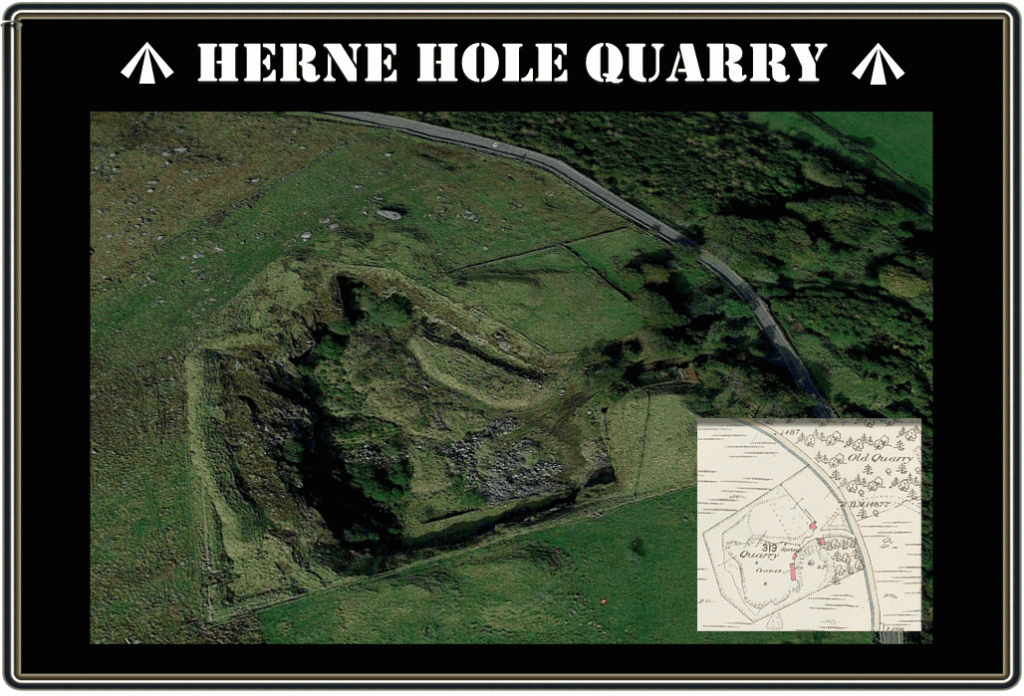
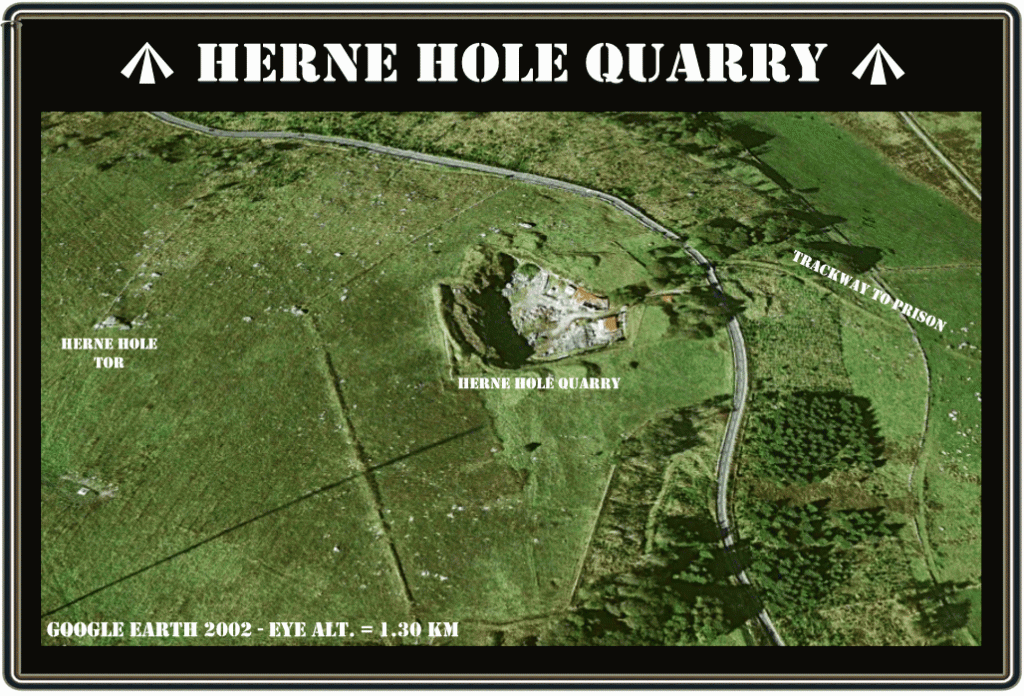
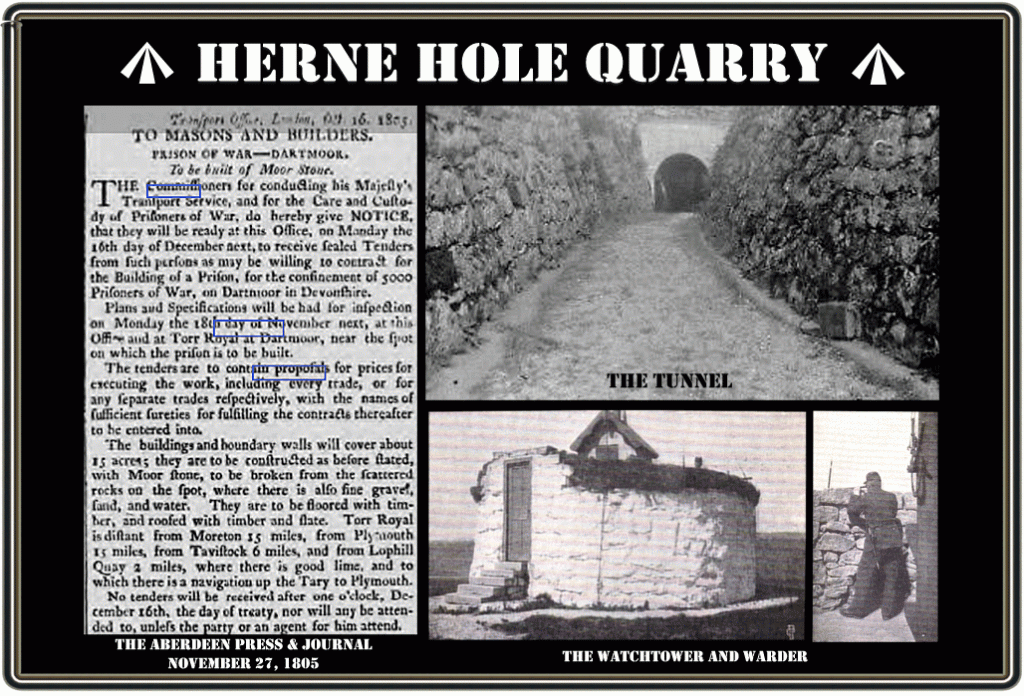
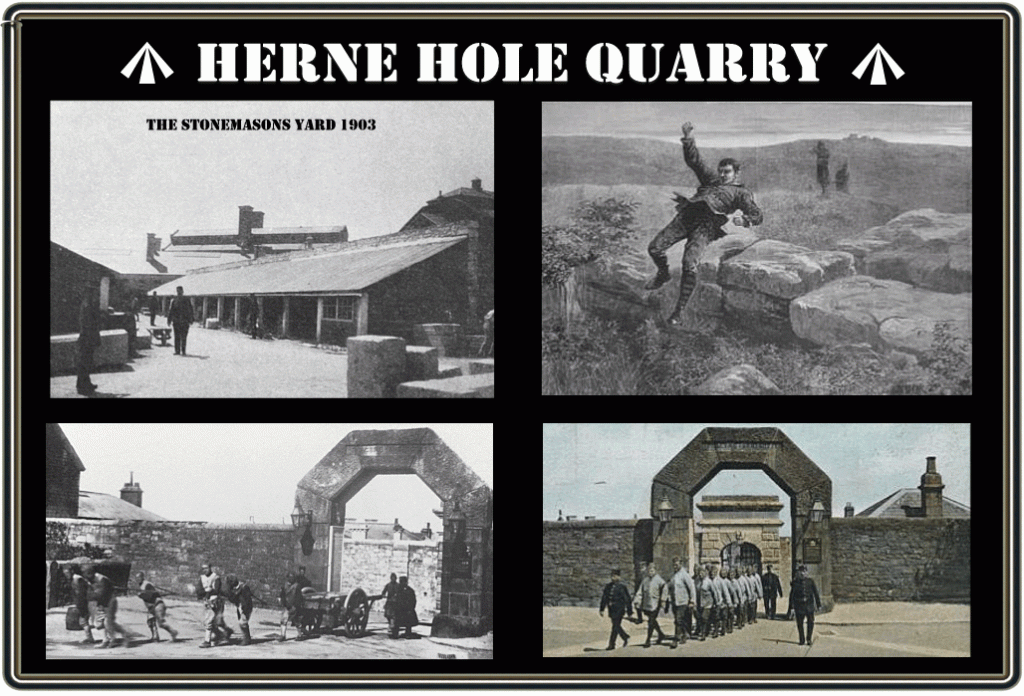
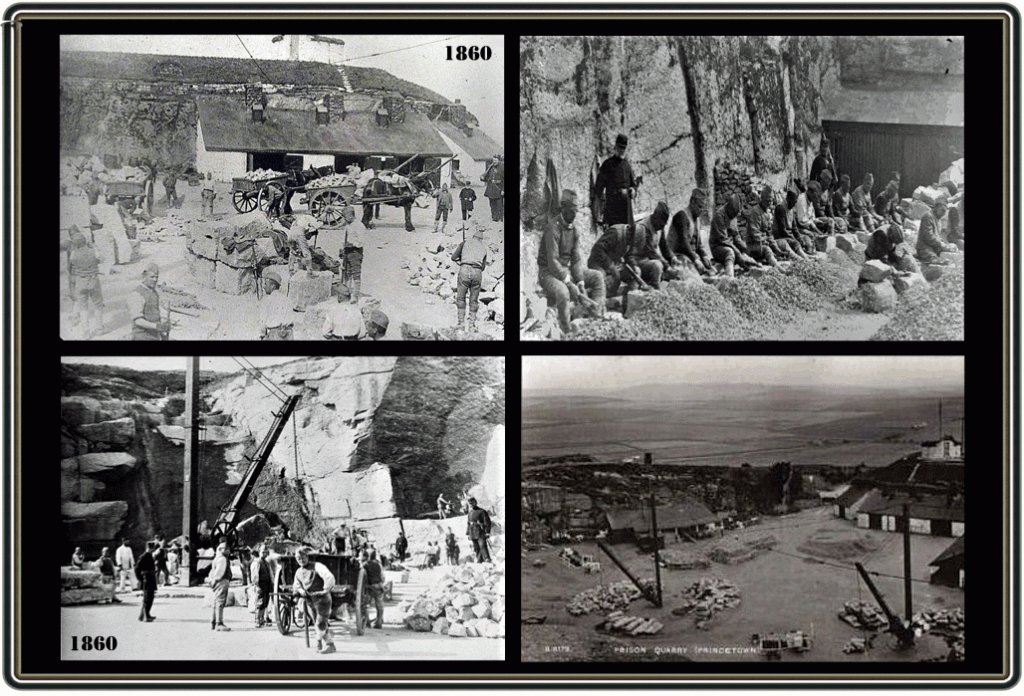
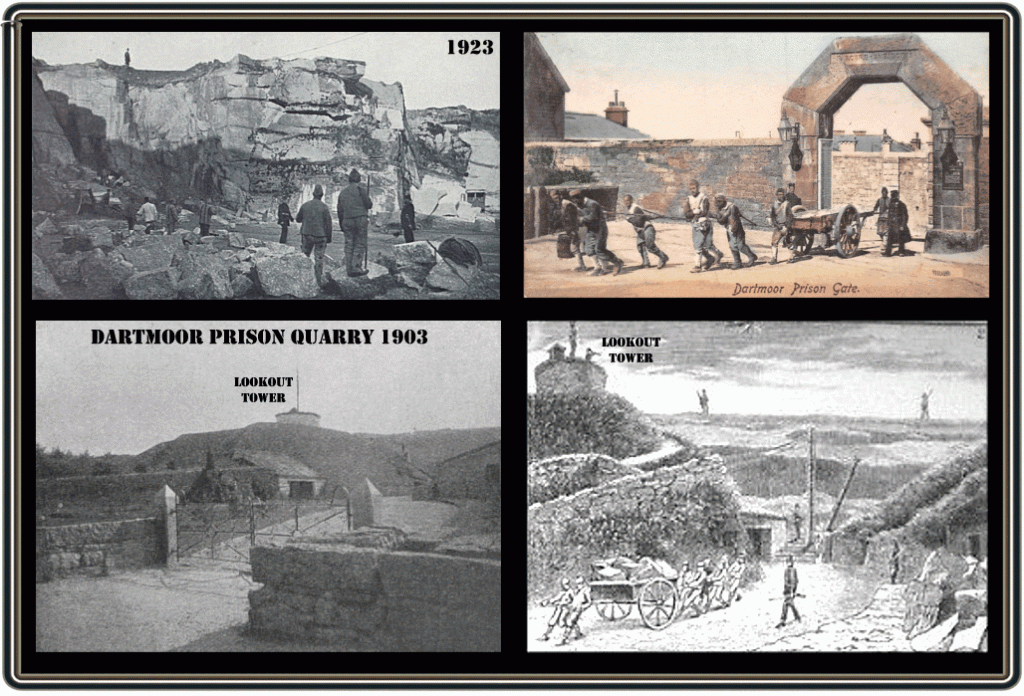
Talking of quarries and stone, it may be of interest to know that the Dartmoor Society’s Annual Debate on 20th October 2018 is about Dartmoor Stone. ‘Are we using Dartmoor’s Stone Resources Wisely?’
It is to be held at Meldon Village Hall and full details can be found on our website.